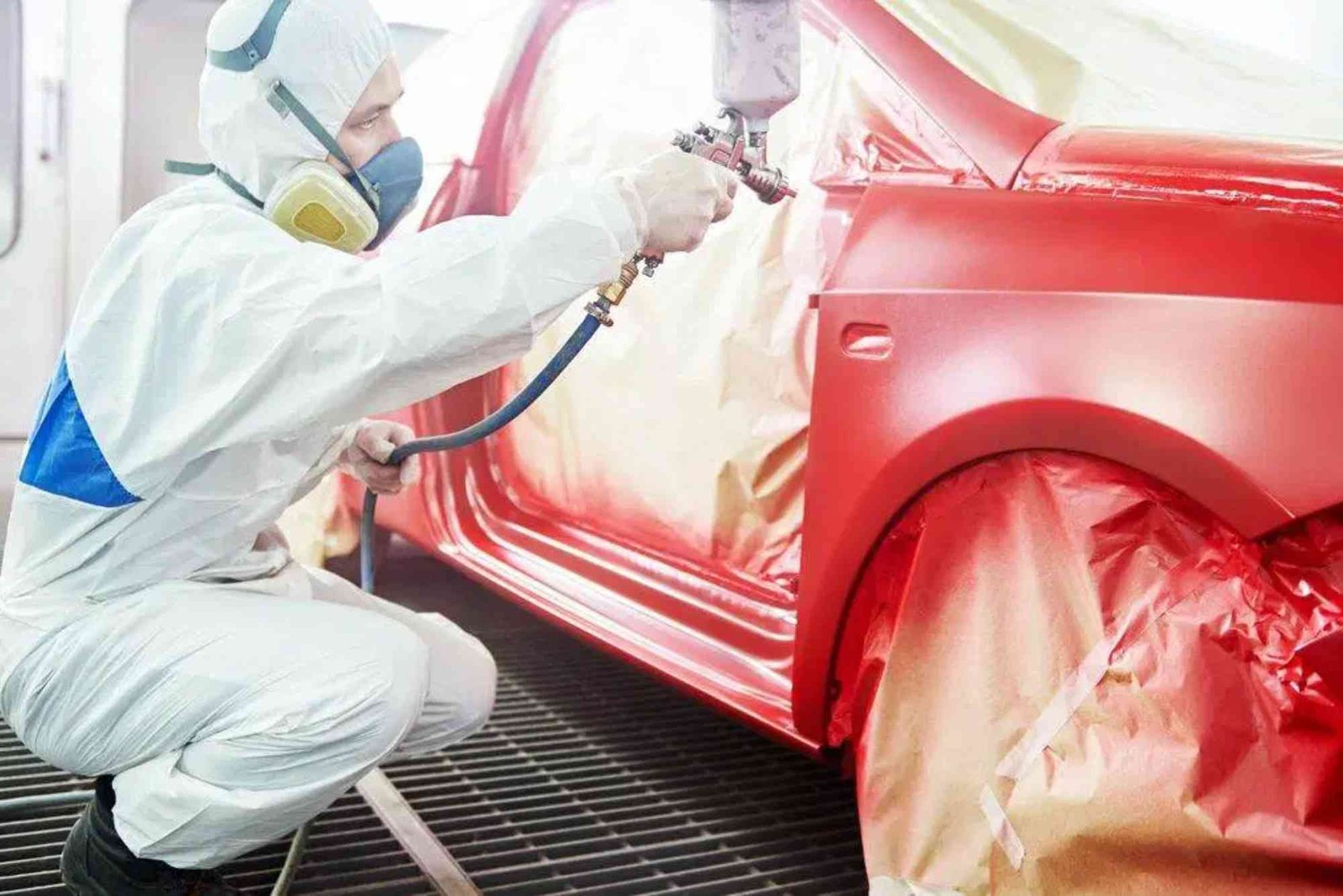How to Increase Ground Clearance of Car Step by Step
Driving on rough or uneven roads can be tough on your vehicle, especially if your car has low ground clearance. A low-slung car may scrape its underbody, damage its bumpers, or even get stuck on speed breakers or rocky surfaces. Learning how to increase ground clearance of car step by step can save you from these troubles, improve ride comfort, and even enhance your vehicle’s performance in some cases. Whether you own a sedan, hatchback, or compact SUV, this guide will explain practical methods to raise your car’s height safely, efficiently, and cost-effectively.
Understanding Ground Clearance and Why It Matters
Ground clearance, also known as ride height, is the distance between the lowest part of your car (usually the chassis) and the ground. This measurement plays a key role in determining how well your car handles different road surfaces. Cars with higher ground clearance are better suited for off-road or bumpy terrains, while those with lower clearance are more stable and aerodynamic on highways.
However, if your car has too little clearance, it can cause frequent scraping under the vehicle, damage to exhaust pipes, or even oil sump issues. That’s why understanding how to increase ground clearance of car step by step is important for drivers living in areas with poor roads, heavy rainfall, or frequent speed bumps.
Assess Your Car’s Current Ground Clearance
Before making any modifications, you need to measure your current ground clearance. Park your vehicle on a level surface, and use a measuring tape to check the distance between the lowest part of the underbody and the ground. Note this number as your baseline.
This helps you decide how much height increase you actually need. For example, if your car scrapes slightly on big bumps, a 10–15 mm increase might be enough. But if you regularly drive on rocky paths or mountainous regions, a 25–40 mm lift may be more suitable.
Inspect the Suspension System
The suspension plays a vital role in your car’s ground clearance. Worn-out shock absorbers or sagging springs can reduce ride height over time. Check if your suspension system is in good shape. If you notice your car sits lower than usual or the ride feels too bouncy, it might be time to replace your shocks or springs.
Installing heavy-duty or raised suspension components is a common and effective way to increase ground clearance. This upgrade not only raises the car’s body but also improves load-bearing capacity and off-road performance.
Use Coil Spring Adjusters or Spacers
One of the simplest methods for how to increase ground clearance of car step by step is installing coil spring adjusters or spacers. These are rubber or metal inserts that fit between the car’s coil springs to increase height.
They are affordable, easy to install, and reversible if needed. Spring spacers can raise your car by 10–40 mm, depending on the design. However, you should ensure that they are installed correctly to maintain proper suspension geometry and ride comfort.
Upgrade to Larger Tyres and Wheels
Changing your car’s tyres is another way to gain extra ground clearance. By choosing tyres with a slightly taller sidewall, you can raise the vehicle’s height. However, there are limitations. Oversized tyres can affect speedometer readings, fuel efficiency, and wheel alignment.
Therefore, when considering tyre upgrades, consult your vehicle’s manual or a professional mechanic. Typically, you can safely increase tyre diameter by 3–5% without affecting overall performance. This small change can provide a noticeable height improvement while keeping your car safe and stable.
Replace or Adjust Shock Absorbers
Shock absorbers control the suspension movement and contribute to how high or low your car sits. Some adjustable shock absorbers allow height tuning for different driving conditions. Replacing standard shocks with adjustable or heavy-duty ones can give you more control over your car’s clearance and ride comfort.
This step is slightly more expensive but provides long-term benefits, especially if you frequently carry heavy loads or drive on poor roads.
Add Suspension Lift Kits
Lift kits are a professional-grade solution to increase ground clearance. These kits include spacers, extended springs, or suspension arms designed specifically for lifting the vehicle. Lift kits are popular among SUV and 4×4 owners but can also be adapted for smaller vehicles in moderation.
They offer a more permanent and safe solution for those who want a noticeable lift. However, installation must be done by an experienced technician to ensure proper alignment and safety.
Check and Adjust the Alignment
After any modification that changes ride height, wheel alignment must be checked. Changing suspension geometry can affect steering and tyre wear. Improper alignment may lead to reduced handling stability, vibration, or uneven tyre wear.
Ensure you visit a certified service center for alignment adjustment after increasing your car’s ground clearance. This guarantees that the vehicle remains stable and safe on the road.
Consider Underbody Protection
If increasing ground clearance fully isn’t possible, consider adding skid plates or underbody protection. This doesn’t increase height but protects vital components from scrapes and impacts. A steel or aluminum skid plate under the engine bay can prevent costly damage while driving on rough terrains.
It’s a practical solution when only moderate improvements are needed.
Maintain Proper Tyre Pressure
Maintaining correct tyre pressure may seem basic, but it directly affects ground clearance. Under-inflated tyres lower your vehicle’s height and increase wear. Always keep tyres inflated to the manufacturer’s recommended levels. This simple habit keeps your car at optimal height and ensures safety and comfort.
Avoid Overloading Your Vehicle
Excessive weight lowers a car’s ground clearance temporarily, as the suspension compresses under heavy loads. Avoid unnecessary items in your trunk and stick to your vehicle’s maximum load rating. If you regularly carry heavy cargo, upgrading to stronger suspension components can help maintain height stability.
Common Mistakes to Avoid When Increasing Ground Clearance
When learning how to increase ground clearance of car step by step, some drivers make errors that compromise safety and performance. Avoid these pitfalls:
-
Installing oversized tyres without checking compatibility.
-
Ignoring wheel alignment after modifications.
-
Using poor-quality spacers or lift kits.
-
Raising the car excessively, which affects stability and aerodynamics.
-
Forgetting to upgrade suspension components when needed.
Following a professional approach ensures you get better clearance without compromising the car’s handling.
Benefits of Increasing Ground Clearance
Increasing your car’s ground clearance offers multiple benefits beyond just avoiding scrapes. It improves your driving confidence, enhances visibility, and provides better off-road capability. You’ll also experience less damage to the undercarriage, which means fewer repair bills in the long run.
Moreover, cars with adequate clearance tend to have improved performance on bumpy or flooded roads, making them more adaptable for all weather conditions.
Expert Tips for Safe Ground Clearance Enhancement
If you’re looking for a comprehensive How To Increase Tips, you can explore expert guidance and practical suggestions here. Always consult a certified mechanic before making suspension or tyre changes, as professional input ensures correct installation and maintains your car’s balance. For a full technical overview, you can also check the detailed How To Increase Ground Guide that provides verified steps from automotive specialists.
If you want to explore related automotive tips, check this Related article on buddypackagingco.com for more insights.
Learning how to increase ground clearance of car step by step is essential for drivers facing rough terrain or frequent scraping issues. The right modifications—such as adjusting suspension, adding spacers, or upgrading tyres—can make your vehicle safer, more comfortable, and better suited for all types of roads. However, always ensure professional installation and proper alignment to maintain handling and safety.
FAQ Section
Q1: How can I increase ground clearance without changing suspension?
You can use tyre upgrades, coil spring spacers, or air suspension assist kits. These options raise the car slightly without major suspension changes.
Q2: Does increasing ground clearance affect car handling?
Yes, a higher ride height can slightly reduce stability at high speeds. However, if done properly, it won’t significantly affect handling for daily driving.
Q3: How much does it cost to increase ground clearance?
The cost varies based on the method. Coil spacers cost around $50–$150, while professional lift kits can range from $300 to $1500 depending on the vehicle.
Q4: Is it legal to raise the ground clearance of my car?
In most regions, minor lifts are legal as long as safety and stability are not compromised. Always check your local vehicle modification laws.
Q5: Can I use bigger tyres to increase clearance safely?
Yes, but stay within a 3–5% diameter increase to maintain proper handling, fuel efficiency, and speedometer accuracy.
Q6: Does ground clearance affect fuel consumption?
Higher ground clearance can slightly reduce aerodynamics, leading to minor fuel efficiency drops. However, the impact is usually minimal.
Q7: What’s the ideal ground clearance for city driving?
For urban areas, 170–180 mm is ideal. For rural or hilly regions, 200 mm or above provides better protection and flexibility.








